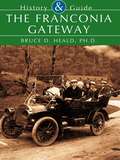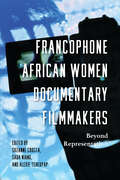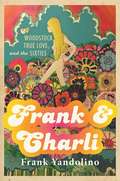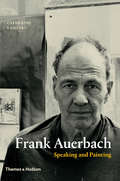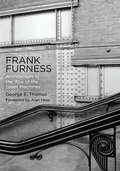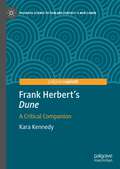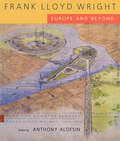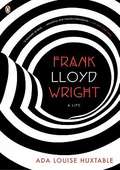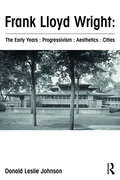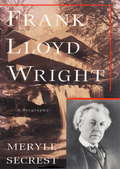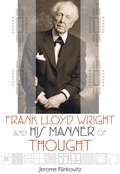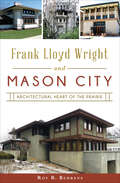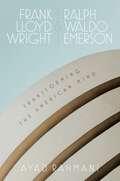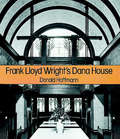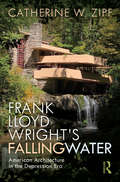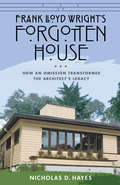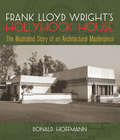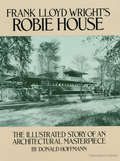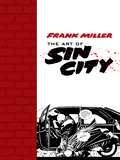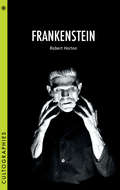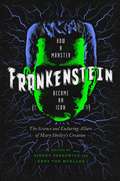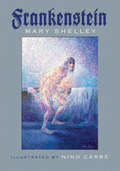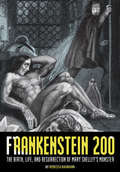- Table View
- List View
The Franconia Gateway
by Bruce D. HealdOf the several entrances to the White Mountains, none is more majestic than the Franconia Gateway. The gateway begins in the valley of the Pemigewasset River and reaches through broad meadows, between jagged mountains, alongside quiet pools and cascades of sparkling water, into the wilderness of Franconia Notch and beyond. Altogether, this region contains more historical secrets and hidden treasures than any other part of the White Mountains.The Franconia Gateway opens the way from a new perspective. With nearly one hundred fifty breathtaking views and fascinating stories, this history and guide leads from lore of the Native Americans, explorers, and early entrepreneurs to the logging boom years and the subsequent preservation era on to the days of the artists and poets and, ultimately, the tourists. The journey progresses through the communities of Plymouth, Campton, Thornton, Waterville Valley, Woodstock, and Franconia, and includes all the wonder and mystery of sites such as the Lost River, the Flume, and the Old Man of the Mountain.
Francophone African Women Documentary Filmmakers: Beyond Representation (Studies in the Cinema of the Black Diaspora)
by Florence Martin Sheila Petty Melissa Thackway El Hadji Diop Felix Veilleux Suzanne Gauch Herve TchumkamFrancophone African Women Documentary Filmmakers is groundbreaking edited collection which explores the contributions of Francophone African women to the field of documentary filmmaking. Rich in its scope and critical vision it constitutes a timely contribution to cutting-edge scholarly debates on African cinemas. Featuring 10 chapters from prominent film scholars, it explores the distinctive documentary work and contributions of Francophone African women filmmakers since the 1960s. It focuses documentaries by North African and Sub-Saharan women filmmakers, including the pioneering work of Safi Faye in Kaddu Beykat, Rama Thiaw's The Revolution Will Not be Televised, Katy Lena Ndiaye's Le Cercle des noyes and En attendant les hommes, Dalila Ennadre's Fama: Heroism Without Glory and Leila Kitani's Nos lieux interdits. Shunned from costly fictional- 35mm-filmmaking, Francophone African Women Documentary Filmmakers examines how these women engaged and experimented with documentary filmmaking in personal, evocative ways that countered the officially sanctioned, nationalist practice of show and teach/promote.
Frank and Charli: Woodstock, True Love, and the Sixties
by Frank YandolinoStories of Remarkable People and Enduring Love in the Time of Woodstock In the 1960s and '70s, Frank Yandolino rode the hippie counterculture movement alongside visionaries like Artie Kornfeld and Michael Lang, and he helped put together the Woodstock Festival of 1969, the era’s emblem of love and peace. From then on (and even before that), Yandolino, a beguiling fast-talker, charmer, and gifted storyteller, took charge of his life according to those ideals, grabbing and embracing all opportunities that were thrown his way. This memoir is an account of his life as a hippie, art director, entrepreneur, manager, and screenwriter (as well as various other hats he wore in the creative industry)—representing musicians like Joe Cocker and Paul Butterfield, art directing at Penthouse magazine, designing "erotic sheets,” writing a screenplay about Marilyn Monroe and her seamstress Lena Pepitone, among other things. With his gung-ho attitude and fortuitous connections, Yandolino befriended Salvador Dali, hung out with Jimi Hendrix, ran with Abbie Hoffman, was kidnapped by a festival security detail in Paris, mixed with models and Penthouse pets, and watched secret Hells Angels initiation ceremonies. Throughout it all, Yandolino’s key message is his "free bird” philosophy of grabbing every chance you can and staying true to one’s artistic individuality. And, in the end, despite his fast life, he was always grounded by his love for his wife, Charli.
Frank Auerbach: Speaking and Painting
by Catherine LampertA rare and fascinating account of one of modern and contemporary painting's most powerful creative minds In the course of a career covering more than sixty years, Frank Auerbach has established a still growing international reputation for his paintings of friends, family, and surroundings in north London, with his vigorous, precise brushwork, and for his insistence on working until the picture emerges, free of all "possible explanations." Catherine Lampert, an art historian and the curator of a major Auerbach retrospective at the Kunstmuseum Bonn and Tate Britain, has had unique access to the artist since 1978, when she became one of his sitters. Drawing on her conversations with Auerbach and from published and archival interviews, she offers rare insight into his professional life, working methods, and philosophy, as well as the places, people, and experiences that have shaped his life. These include arriving in Britain as a seven-year-old refugee from Nazi Germany in 1939, finding his way in the London art world of the 1950s and 60s, his friendships with Leon Kossoff, Francis Bacon, and Lucian Freud, among others, and his approaches to looking and painting throughout his working life. The text is complemented by illustrations of Auerbach's paintings and drawings as well as by images from his studio and personal photographs that have never been published before.
Frank Furness: Architecture in the Age of the Great Machines (Haney Foundation Series)
by George E. Thomas Alan HessFrank Furness (1839-1912) has remained a curiosity to architectural historians and critics, somewhere between an icon and an enigma, whose importance and impact have yet to be properly evaluated or appreciated. To some, his work pushed pattern and proportion to extremes, undermining or forcing together the historic styles he referenced in such eclectic buildings as the Pennsylvania Academy of the Fine Arts and the University of Pennsylvania Library. To others, he was merely a regional mannerist creating an eccentric personal style that had little resonance and modest influence on the future of architecture. By placing Furness in the industrial culture that supported his work, George Thomas finds a cutting-edge revolutionary who launched the beginnings of modern design, played a key part in its evolution, and whose strategies continue to affect the built world.In his sweeping reassessment of Furness as an architect of the machine age, Thomas grounds him in Philadelphia, a city led by engineers, industrialists, and businessmen who commissioned the buildings that extended modern design to Chicago, Glasgow, and Berlin. Thomas examines the multiple facets of Victorian Philadelphia's modernity, looking to its eager embrace of innovations in engineering, transportation, technology, and building, and argues that Furness, working for a particular cohort of clients, played a central role in shaping this context. His analyses of the innovative planning, formal, and structural qualities of Furness's major buildings identifies their designs as initiators of a narrative that leads to such more obviously modern figures as Louis Sullivan, William Price, Frank Lloyd Wright and eventually, the architects of the Bauhaus.Misunderstood and reviled in the traditional architectural centers of New York and Boston, Furness's projects, commissioned by the progressive industrialists of the new machine age, intentionally broke with the historical styles of the past to work in a modern way—from utilizing principles based on logistical planning to incorporating the new materials of the industrial age. Lavishly illustrated, the book includes more than eighty black-and-white and thirty color photographs that highlight the richness of his work and the originality of his design spanning more than forty years.
Frank Herbert's "Dune": A Critical Companion (Palgrave Science Fiction and Fantasy: A New Canon)
by Kara KennedyThis book offers a critical study of Frank Herbert’s Dune (1965), the world’s bestselling science fiction novel. Kara Kennedy discusses the novel’s exploration of politics and religion, its influential ecological messages, the focus on the human mind and consciousness, the complex nature of the archetypal hero, and the depiction of women’s influence and control. In Dune, Herbert demonstrated that sophistication, complexity, and a multi-layered world with three-dimensional characters could sit comfortably within the science fiction genre. Underneath its deceptively simple storyline sits a wealth of historical and philosophical contexts and influences that make it a rich masterpiece open to multiple interpretations. Kennedy’s study shows the continuing relevance of the novel in the 21st century due to its classic themes and its concerns about the future of humanity, as well as the ongoing nature of issues such as ecological disruption and conflicts over resources and religion.
Frank Lloyd Wright: Europe and Beyond
by Anthony AlofsinAsk Americans to think of a famous architect and the person they are most likely to name is Frank Lloyd Wright. Wright's work, his reputation, and his long and colorful career have made him an icon of modern American architecture. But despite his status as America's most celebrated architect, his influence throughout an active practice spanning the years 1896 to 1959 is so wide and complex that it has been difficult to grasp fully.The essays in this book look not at the United States, the context usually associated with Wright, but at countries around the globe. Anthony Alofsin has assembled a superb collection of scholars to examine Wright's importance from Japan to Great Britain, France to Chile, Mexico to Russia, and the Middle East. Interwoven in the essays are stories of champions and critics, rivals and acolytes, books and exhibitions, attitudes toward America and individualism, and the many ways Wright's ideas were brought to the world. Together the essays represent a first look at Wright's impact abroad, some from the perspective of natives of the countries discussed and others from that of informed outsiders. Of special note is Bruno Zevi's firsthand account of traveling with Wright in Italy. Zevi was instrumental in bringing Wright's ideas to Italy and in helping launch the movement for organic architecture. Of unusual interest in light of today's events in Iraq is Mina Marefat's essay on Wright's elaborate designs for a cultural center for the city of Baghdad. The Baghdad projects, which were never realized after the assassination of King Faisal II, were Wright's principal focus in his last decade.In searching out the little known rather than reexamining the well-established aspects of Frank Lloyd Wright's work, this collection is a rewarding exploration of his vision and influence.
Frank Lloyd Wright
by Ada Louise HuxtablePulitzer Prize?winning critic Ada Louise Huxtable?s biography of America?s greatest architect Renowned architecture critic Ada Louise Huxtable?s biography Frank Lloyd Wright looks at the architect and the man, from his tumultuous personal life to his long career as a master builder. Along the way she introduces Wright?s masterpieces? from the tranquil Fallingwater to Taliesin, rebuilt after tragedy and murder?not only exploring the mind of the man who drew the blueprints but also delving into the very heart of the medium, which he changed forever. .
Frank Lloyd Wright: The Early Years : Progressivism : Aesthetics : Cities
by Donald Leslie JohnsonFrank Lloyd Wright : The Early Years : Progressivism : Aesthetics : Cities examines Wright's belief that all aspects of human life must embrace and celebrate an aesthetic experience that would thereby lead to necessary social reforms. Inherent in the theory was a belief that reform of nineteenth-century gluttony should include a contemporary interpretation of its material presence, its bulk and space, its architectural landscape. This book analyzes Wright's innovative, profound theory of architecture that drew upon geometry and notions of pure design and the indigenous as put into practice. It outlines the design methodology that he applied to domestic and non-domestic buildings and presents reasons for the recognition of two Wright Styles and a Wright School. The book also studies how his design method was applied to city planning and implications of historical and theoretical contexts of the period that surely influenced all of Wright's community and city planning.
Frank Lloyd Wright
by Meryle SecrestMeryle Secrest's Frank Lloyd Wright: A Biography focuses on Wright's family history, personal adventures, and colorful friends and family. Secrest had unprecedented access to an archive of over one hundred thousand of Wright's letters, photographs, drawings, and books. She also interviewed surviving devotees, students, and relatives. The result is an explicit portrait of both the genius architect and the provocative con-man. "Secrest seizes the themes most evocative of certain of our cultural myths, forging them into a coherent and emotionally plausible narrative. "—New Republic "An engaging narrative. "—New York Times Book Review "The real triumph of this biography . . . is the link it makes between Frank Lloyd Wright's personal life and his architecture. "—The Economist "Secrest's achievement is to etch Wright's character in sharp relief. . . . [She] presents Wright in his every guise. "-Blair Kamin, Chicago Tribune "An extremely engaging profile. "—The Philadelphia Inquirer "A spellbinding portrait. "—Library Journal "The best [biography] so far, a huge and definitive accumulation of fact. "—Time
Frank Lloyd Wright and His Manner of Thought
by Jerome KlinkowitzAn iconic figure in American culture, Frank Lloyd Wright is famous throughout the world. Although his achievements in architecture are stunning, it is his importance in cultural history, Jerome Klinkowitz contends, that makes Wright the object of such avid and continuing interest. Designing more than just buildings, Wright offered a concept for living that still influences how people conduct their lives today. Wright's innovations in architecture have been widely studied, but this is the most comprehensive and sustained treatment of his thought. Klinkowitz presents a critical biography driven by the architect's own work and intellectual growth, focusing on the evolution of Wright's thinking and writings from his first public addresses in 1894 to his last essay in 1959. Did Wright reject all of Victorian thinking about the home, or do his attentions to a minister's sermon on "the house beautiful" deserve closer attention? Was Wright echoing the Transcendentalism of Ralph Waldo Emerson, or was he more in step with the philosophy of William James? Did he reject the Arts and Crafts movement, or repurpose its beliefs and practices for new times? And, what can be said of his deep dissatisfaction with architectural concepts of his own era, the dominant modernism that became the International Style? Even the strongest advocates of Frank Lloyd Wright have been puzzled by his objections to so much that characterized the twentieth century, from ideas for building to styles of living. In "Frank Lloyd Wright and ""His Manner of Thought," Klinkowitz, a widely published authority on twentieth-century literature, thought, and culture, examines the full extent of Wright's books, essays, and lectures to show how he emerged from the nineteenth century to anticipate the twenty-first. "
Frank Lloyd Wright and Mason City: Architectural Heart of the Prairie
by Roy R. Behrens&“A superb study of what a stellar group of architects accomplished in the Iowa locale, not to mention the vision of the locals&” (Universitas). In the early 1900s, Frank Lloyd Wright transformed a small midwestern prairie community into one of the world&’s most important architectural destinations. Mason City, Iowa, became home to his City National Bank and Park Inn—the last surviving Wright hotel. In addition, his prototype Stockman House helped launch the Prairie School architectural style. Soon after, architect Walter Burley Griffin followed in Wright&’s footsteps, designing a cluster of Prairie School homes in the Rock Crest/Rock Glen neighborhood. Design historian Roy Behrens leads the way through Mason City&’s historic development from the Industrial Revolution to the modern era of Frank Lloyd Wright. Includes photos &“A fine job of showcasing Wright&’s work in Mason City while incorporating some of Wright&’s personal (and scandalous!) history with the evolution of this north central Iowa town.&” —The Poetry of Sight
Frank Lloyd Wright and Ralph Waldo Emerson: Transforming the American Mind
by Ayad RahmaniFrank Lloyd Wright and Ralph Waldo Emerson: Transforming the American Mind is an interdisciplinary volume of literary and cultural scholarship that examines the link between two pivotal intellectual and artistic figures. It probes the degree to which the transcendentalist author influenced the architect’s campaign against dominant strains of American thought. Inspired by Emerson’s writings on the need to align exterior expression with interior self, Wright believed that architecture was not first and foremost a matter of accommodating spatial needs, but a tool to restore intellectual and artistic freedom, too often lost in the process of modernization.Ayad Rahmani shows that Emerson’s writings provide an avenue for interpreting Wright’s complex approach to country and architecture. The two thinkers cohered around a common concern for a nation derailed by nefarious forces that jeopardized the country’s original promise. In Emerson’s condemnations of slavery and inequality, Wright found inspiration for seeking redress against the humiliations suffered by the modern worker, be it at the hands of an industrial manager or an office boss. His designs sought to challenge dehumanizing labor practices and open minds to the beauty and science of agriculture and the natural world. Emerson’s example helped Wright develop architecture that aimed less at accommodating a culture of clients and more at raising national historical awareness while also arguing for humane and equitable policies.Frank Lloyd Wright and Ralph Waldo Emerson presents a new approach to two vital thinkers whose impact on American society remains relevant to this day.
Frank Lloyd Wright for Kids: His Life and Ideas
by Kathleen Thorne-ThomsenAn engaging, kid-friendly exploration of America's leading architect and his work This revised and updated edition of a longstanding classic, Frank Lloyd Wright for Kids, details the life, times, and work of the celebrated architect. Through simple, kid-friendly prose and anecdotes, author Kathleen Thorne-Thomsen describes the influences of Wright's Wisconsin childhood filled with nature, music, and close family ties; his struggles to find work as a young architect; the unique style that led him to the top of his profession; and masterpieces such as the Robie House, Hollyhock House, Fallingwater, the Guggenheim, and many others. Also discussed are Wright's sometimes controversial private and public life and the people and times that influenced him and vice-versa, with new sidebars on topics such as the Chicago and Bauhaus schools of architecture, Friedrich Froebel and his toy blocks that enchanted Wright as a child, and the 1893 Chicago World's Fair. Budding architects will delve into architectural and design concepts while having fun through 21 hands-on projects, such as creating an edible model of Fallingwater, making a miniature Japanese kite, reading an architectural plan, and much more. A time line, glossary, bibliography, and list of houses to visit are also included.
Frank Lloyd Wright's Dana House
by Donald HoffmannHandsome pictorial essay scrutinizes another Wright residential masterpiece. Innovative "prairie-style" lines, dynamic structure, decorative sculpture and more are captured in over 160 interior and exterior photos, plans, elevations, sketches, studies and more. A detailed, informative text documents the history and background of the house, its site, plans, construction, and other aspects.
Frank Lloyd Wright’s Fallingwater: American Architecture in the Depression Era
by Catherine W ZipfFrank Lloyd Wright’s Fallingwater explores the relationship between the economic tumult in the United States in the 1930s, Frank Lloyd Wright, and the construction of his most famous house, Fallingwater. The book reinterprets the history of this iconic building, recognizing it as a Depression-era monument that stands as a testimony to what an American architect could achieve with the right site, client, and circumstance, even in desperate economic circumstances. Using newly available resources, author Catherine W. Zipf examines Wright’s work before and after Fallingwater to show how it was influenced by the economic climate, public architectural projects of the Great Depression, and America’s changing relationship with Modernist style and technology. Including over 50 black-and-white images, this book will be of great interest to students, historians, and researchers of art, architecture, and Frank Lloyd Wright.
Frank Lloyd Wright's Forgotten House: How an Omission Transformed the Architect's Legacy
by Nicholas D. HayesWhile the grandiosity of Fallingwater and elegance of Taliesin are recognized universally, Frank Lloyd Wright’s first foray into affordable housing is frequently overlooked. Although Wright began work on his American System-Built Homes (ASBH, 1911–17) with great energy, the project fell apart following wartime shortages and disputes between the architect and his developer. While continuing to advocate for the design of affordable small homes, Wright never spoke publicly of ASBH. As a result, the heritage of many Wright-designed homes was forgotten. When Nicholas and Angela Hayes became stewards of the unassuming Elizabeth Murphy House near Milwaukee, they began to unearth evidence that ultimately revealed a one-hundred-year-old fiasco fueled by competing ambitions and conflicting visions of America. The couple’s forensic pursuit of the truth untangled the ways Wright’s ASBH experiment led to the architect’s most productive, creative period. Frank Lloyd Wright’s Forgotten House includes a wealth of drawings and photographs, many of which have never been previously published. Historians, architecture buffs, and Wrightophiles alike will be fascinated by this untold history that fills a crucial gap in the architect’s oeuvre.
Frank Lloyd Wright's Hollyhock House: The Illustrated Story of an Architectural Masterpiece
by Donald HoffmannAt the behest of oil heiress Aline Barnsdall, the twentieth century's greatest architect created one of his most imaginative and controversial residential designs. Built in Hollywood in 1920–21, Hollyhock House attests to the genius of Frank Lloyd Wright. This splendid home and its construction are documented here in more than 120 illustrations — photographs, floor plans, elevations, sketches, etc. — accompanied by the author's detailed, perceptive text.Donald Hoffmann, noted Wright scholar and architectural critic, draws on a wealth of primary documents and his own direct observation not only to re-create the problems of clashing egos and rancor behind the house's turbulent history, but also to invite a true appreciation of its myriad aesthetic and architectural charms. The varied aspects of the house are captured in this lavishly illustrated tribute, which reveals the imaginatively shaped spaces, inner harmonies, daring conceptions, and exquisite details that make Hollyhock House a landmark of modern design.
Frank Lloyd Wright's Robie House: The Illustrated Story of an Architectural Masterpiece (Dover Architecture)
by Donald HoffmannFrank Lloyd Wright firmly believed that "life could be formed anew if new form could be brought to its setting, architecture." His revolt against customary architectural design was shared by rugged individualist Fred C. Robie, who chose Wright to build his dream house in 1908. In this painstakingly researched and illuminating account of the design and construction of the Robie home, a noted architectural authority presents an in-depth study remarkable for clarity and thoroughness.At age 28, Robie had become a highly successful businessman who conceived the idea of building a grand home in his native Chicago. He insisted on a design incorporating features that were innovative for the day: hallways and stairwells situated to conserve valuable space, rooms that suggested feelings of airiness, and narrow trimmings on doorways and windows, among others. Robie's wish to shape space as a means of personal expression meshed with Wright's own feelings and spirit. The two strong-willed men formed a perfect union: Robie had found his architect and Wright his ideal client.Drawing on revealing family documents, including a 1958 interview with Robie, and a host of other sources, the author has compiled an authoritative photo-history, enabling the reader to witness each stage and various transformations of a landmark of modern architecture. The text is enhanced by 160 carefully selected illustrations, including perspectives and elevations, cross-sectional drawings, floor plans, designs for windows, carpets, lighting fixtures and other furnishings, plus recent and historic photographs. Now students, architects, any lover of fine buildings can watch an architectural masterpiece take shape in this profusely illustrated history of the house Wright himself labeled "a source of world-wide architectural inspiration."
Frank Miller: The Art of Sin City (Sin City)
by Frank MillerFrank Miller&’s Sin City has set the gold standard for crime comics, both for Miller&’s unflinching stories and for his visceral, powerfully charged art. To honor the artist and his groundbreaking work, Dark Horse is proud to return Frank Miller: The Art of Sin City to print, now in an affordable softcover edition. An astonishing look into a master&’s process, containing pieces both published and unpublished, and featuring items ranging from preliminary sketches to promotional images, this beautiful artistic showcase holds everything a Sin City fan, or connoisseur of fine art, could ever hope for. * The out-of-print masterpiece, now in a digital format! * Available just in time for the release of Miller and Robert Rodriguez&’s Sin City: A Dame to Kill For! * Includes rarely seen art! * Introduction by art historian R. C. Harvey!
Frankenstein (Cultographies)
by Robert HortonJames Whale's Frankenstein (1931) spawned a phenomenon that has been rooted in world culture for decades. This cinematic Prometheus has generated countless sequels, remakes, rip-offs, and parodies in every media, and this granddaddy of cult movies constantly renews its followers in each generation. Along with an in-depth critical reading of the original 1931 film, this book tracks Frankenstein the monster's heavy cultural tread from Mary Shelley's source novel to today's Internet chat rooms.
Frankenstein
by Robert HortonJames Whale's Frankenstein (1931) spawned a phenomenon that has been rooted in world culture for decades. This cinematic Prometheus has generated countless sequels, remakes, rip-offs, and parodies in every media, and this granddaddy of cult movies constantly renews its followers in each generation. Along with an in-depth critical reading of the original 1931 film, this book tracks Frankenstein the monster's heavy cultural tread from Mary Shelley's source novel to today's Internet chat rooms.
Frankenstein: How A Monster Became An Icon: The Science And Enduring Allure Of Mary Shelley's Creation
by Sidney Perkowitz Eddy Von MuellerFew creations have risen from literary origins to reach world-wide importance like Frankenstein. This landmark volume celebrates the bicentenary of Mary Shelley's creation and its indelible impact on art and culture. The tale of a tormented creature created in a laboratory began on a rainy night in 1816 in the imagination of a nineteen-year-old Mary Wollstonecraft Shelley, newly married to the celebrated Romantic poet Percy Shelley. Since its publication two years later, in 1818, Frankenstein: Or, the Modern Prometheus has spread around the globe through every possible medium and variation. Frankenstein has not been out of print once in 200 years. It has appeared in hundreds of editions, perhaps more than any other novel. It has inspired a multitude of stage and screen adaptations, the latest appearing just last year. “Frankenstein” has become an indelible part of popular culture, and is shorthand for anything bizarre and human-made; for instance, genetically modified crops are “Frankenfood.” Conversely, Frankenstein’s monster has also become a benign Halloween favorite. Yet for all its long history, Frankenstein's central premise—that science, not magic or God, can create a living being, and thus these creators must answer for their actions as humans, not Gods—is most relevant today as scientists approach creating synthetic life. In its popular and cultural weight and its expression of the ethical issues raised by the advance of science, physicist Sidney Perkowitz and film expert Eddy von Muller have brought together scholars and scientists, artists and directions—including Mel Brooks—to celebrate and examine Mary Shelley’s marvelous creation and its legacy as the monster moves into his next century.
Frankenstein: Or, The Modern Prometheus (Collected Works Of Mary Wollstonecraft Shelley)
by Mary Shelley Nino Carbe Elizabeth CarbeGenerations have thrilled to Mary Shelley's 1818 novel, the suspenseful tale of a well-intentioned doctorwho dares to play God and the misbegotten monster who wreaks a savage revenge on his creator. Combining elements of Gothic novels and Romantic sensibilities, Frankenstein; or, the Modern Prometheus poses enduring questions about ambition, responsibility, the quest for scientific discovery and immortality, and the fate of social outcasts. Acclaimed as both the first modern horror novel and the first science-fiction novel, the story has inspired countless writers and artists as well as numerous film, theatrical, and television interpretations. Newly designed and reset, this handsome hardbound edition reprints all of Nino Carbé's starkly beautiful pen-and-ink drawings and endpieces from one of the earliest illustrated editions of Frankenstein. Bonus images include five full-color paintings created by Carbé, a noted Walt Disney artist, in the 1980s. The artist's daughter, Elizabeth Carbé, provides a new Foreword
Frankenstein 200: The Birth, Life, and Resurrection of Mary Shelley's Monster (Special Publications of the Lilly Library)
by Rebecca Baumann Jonathan KearnsTwo centuries ago, a teenage genius created a monster that still walks among us. In 1818, Mary Shelley published Frankenstein, and in doing so set forth into the world a scientist and his monster. The daughter of Mary Wollstonecraft, famed women’s rights advocate, and William Godwin, radical political thinker and writer, Mary Shelley is considered the mother of the modern genres of horror and science fiction. At its core, however, Shelley’s Frankenstein is a contemplation on what it means to be human, what it means to chase perfection, and what it means to fear things suchsuch things as ugliness, loneliness, and rejection. In celebration of the two hundredth anniversary of the publication of Frankenstein, the Lilly Library at Indiana University presents Frankenstein 200: The Birth, Life, and Resurrection of Mary Shelley’s Monster. This beautifully illustrated catalog looks closely at Mary Shelley’s life and influences, examines the hundreds of reincarnations her book and its characters have enjoyed, and highlights the vast, deep, and eclectic collections of the Lilly Library. This exhibition catalog is a celebration of books, of the monstrousness that exists within us all, and of the genius of Mary Shelley.
